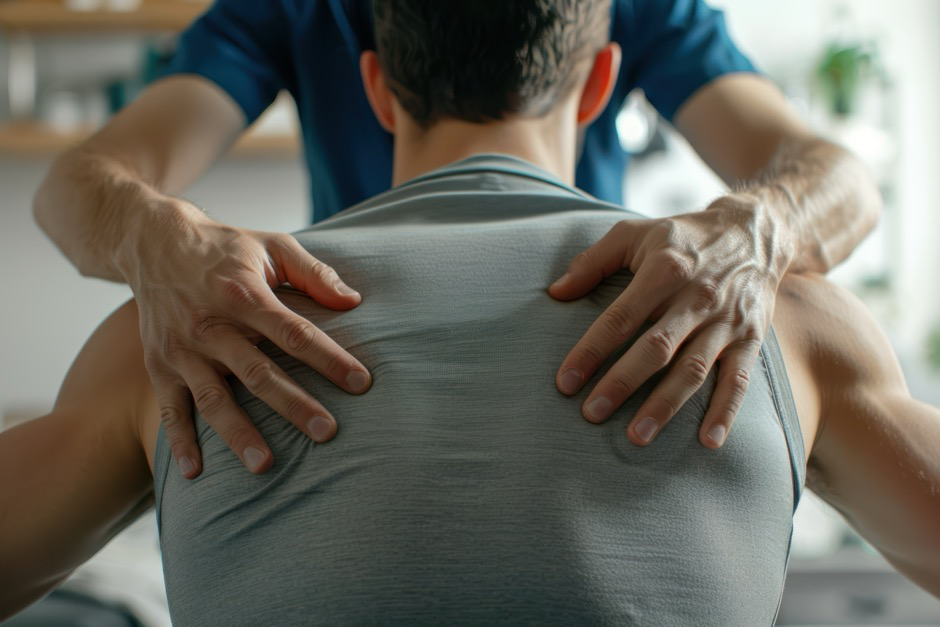A colonoscopy is an essential screening procedure that can help detect early signs of colorectal cancer and other gastrointestinal issues.
Here are five important things you should know before your colonoscopy.
A colonoscopy is an essential screening procedure that can help detect early signs of colorectal cancer and other gastrointestinal issues.
Here are five important things you should know before your colonoscopy.
Spinal cord injuries are devastating events that can have life-altering consequences. These injuries disrupt the communication pathways between the brain and the body, leading to a range of impairments, including paralysis, loss of sensation, and difficulty with bowel and bladder control.
While the initial injury can cause significant damage, prompt medical intervention and early detection are crucial for minimizing further complications and maximizing the potential for recovery.
Early detection of spinal cord injuries is paramount for several reasons:

Recognizing the signs and symptoms of a spinal cord injury is vital for seeking immediate medical attention.
These may include:
If you suspect someone has a spinal cord injury, call for emergency medical help immediately. While waiting for help to arrive, keep the person still and avoid moving them. Support the head and neck to prevent further movement. Do not attempt to remove any helmets or protective gear. Continuously monitor the person’s breathing and provide first aid if necessary.
The orthopedic spine surgeons at Houston Physicians’ Hospital’s Spine Solutions Center understand the urgency and complexity of spinal cord injuries. They’re dedicated to providing comprehensive care to individuals suffering from spinal cord injuries. Visit the Spine Solutions Center webpage to learn more and to find an orthopedic spine surgeon who’s right for you.
Technology has forced us into situations where we often find ourselves hunched over screens. Good posture is vital to neck, back, and shoulder health. Poor posture can lead to back and neck pain.
Continue reading “The Importance of Posture in Shoulder Health: Tips for Improved Alignment”

Back pain is a common ailment that affects millions of people worldwide. While many associate back pain with issues in the lumbar spine (lower back), there’s a hidden culprit that often goes unnoticed: the sacroiliac (SI) joints.
SI joint dysfunction can cause significant discomfort and impact daily activities. Yet it’s frequently misdiagnosed or overlooked. This blog aims to shed light on this often misunderstood condition, exploring its causes, symptoms, and available treatment options.
The SI joints are located on either side of your lower spine, connecting the sacrum (the triangular bone at the base of the spine) to the ilium (the upper part of the pelvis). These joints play a vital role in transferring weight and force between the upper body and the legs. While they have limited mobility, they provide stability and support to the spine and pelvis.
SI joint dysfunction occurs when there’s an imbalance in the movement of the SI joints. They may become too stiff or too loose, leading to pain and discomfort.
This dysfunction can stem from various factors, including:
The symptoms of SI joint dysfunction can vary, but they often include:

The good news is that several effective treatment options are available for SI joint dysfunction, ranging from conservative approaches to minimally invasive procedures:
The physicians at Houston Physicians’ Hospital understand the complexities of back pain and the importance of an accurate diagnosis. They provide comprehensive care for individuals with SI joint dysfunction and other spinal conditions. If you suffer from joint pain, visit the Orthopedic Surgeon in League City TX, Center of Excellence to learn more about various conditions and treatment options.
You can then scroll down and find a doctor who’s right for you.
The physicians at Houston Physicians’ Hospital also specialize in treating neck pain, hip pain, knee pain, and shoulder pain.
Knee pain can significantly impact your mobility and quality of life, hindering your ability to engage in activities you enjoy.
One common source of knee pain, particularly among active individuals, is patellofemoral pain syndrome (PFPS). This condition, often referred to as “runner’s knee,” affects the joint between the kneecap (patella) and thighbone (femur).
Understanding the causes, symptoms, and treatment options for PFPS is crucial for managing pain and returning to an active lifestyle.
PFPS occurs when the cartilage under the kneecap becomes irritated or damaged, leading to pain and discomfort. It’s often caused by overuse, muscle imbalances, or misalignment of the kneecap.
Athletes, particularly runners, are prone to PFPS due to the repetitive stress placed on the knee joint during activities like running, jumping, and squatting.
Several factors can contribute to the development of PFPS:
The most common symptom of PFPS is pain around or behind the kneecap. This pain may worsen with activities that put stress on the knee, e.g., squatting, kneeling, climbing stairs, or running.
Other symptoms may include:

The good news is that PFPS is often treatable with conservative measures. The primary goals of treatment are to reduce pain, improve knee function, and prevent further damage to the joint.
Treatment options may include:
In rare cases, surgery may be considered for severe or persistent PFPS that doesn’t respond to conservative treatment.
The orthopedic physicians at the Advanced Orthopedic & Spine Center of Excellence at Houston Physicians Hospital understand the impact that knee pain can have on your life. They’re dedicated to providing comprehensive care for individuals with patellofemoral pain syndrome and other knee conditions.
They offer a range of treatment options, including physical therapy services, knee pain treatment, knee surgery and hip arthritis treatments in Webster TX.
Learn more and find a doctor who’s right for you.